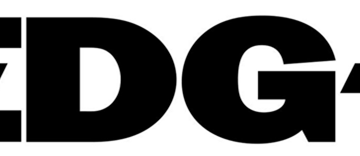2025-09-03 06:05:00
www.computerworld.com

With rumors of an imminent AI meltdown/bubble burst growing more frequent, many enterprise boards are getting nervous. They’re pressuring CIOs to outline how they are protecting the company’s AI efforts in case of such a meltdown.
“The AI bubble is just another layer of uncertainty. Six months from now, we could be facing an entirely new set of circumstances,” said Brian Jackson, a principal research director at Info-Tech Research Group. “There might be way too many major players trying to divvy up this pie. The AI business model today is a highly subsidized one.”
There are steps that IT leaders can take to protect their organizations, but the question remains: Protect them from what exactly? No one knows when the AI bubble will burst — or even if it will — but far more importantly, it’s unknown what shape such a bubble burst is likely to take.
About the only thing that seems relatively certain is the cause of the potential AI bubble burst. It’s identical to what triggered the dot-com implosion in the summer of 2000: untenable business plans backed by VCs and other investors propping up businesses with no meaningful or near-term path to strong profitability.
The dot-com blowup didn’t actually destroy e-commerce. On the contrary, as we sit here 25 years later, e-commerce businesses are doing quite fine. What went away was a lengthy list of smaller players who should not have gotten funding in the first place.
Assessing AI vendor viability
What would an AI burst likely look like? Here are the most likely scenarios. But first, it’s important to group the key AI vendors into three categories.
- The highly diversified behemoths, including Microsoft, Amazon/AWS, Google/Alphabet and maybe Meta, Oracle, Apple, and IBM
- The pure plays, including OpenAI, Anthropic, and Perplexity
- The smaller players, who are too numerous to highlight
Just like with 2000’s dot-com implosion, it’s the lengthy list of smaller players who are most at risk of going away. But even “going away” could take various forms, including being absorbed by a larger player, merging with other small players, or shutting down outright.
As in the dot-com meltdown, some smaller players will likely survive, especially if they provide a needed service that no one else can deliver. A likely situation would be a firm that focuses exclusively on a very small segment of one vertical or geography — or maybe one functional area such as supply chain. If they are narrow enough, they could survive.
“With the small guys, there are some that do specialized stuff, such as genAI for legal or aerospace, where they deliver strong value for a very specific area,” said Ricardo Carreon, the head of technology for Mexican retail chain Almacenes Distribuidores de la Frontera. “As long as they solve a narrow problem and that niche is valuable, they can be pretty successful.”
For CIOs, that means trying to figure out if current vendor partners are likely to survive. That will typically be a very big gamble.
The behemoths/hyperscalers are generally seen as safe, as their diversification all but guarantees survivability. But that may obscure a far more frightening scenario for CIOs: business model change, which is Silicon Valley speak for massive price hikes.
That speaks to the core cause of the likely meltdown. It is not that these models don’t work, hallucinations and other data reliability issues aside. It is the fact that their current business models can’t deliver profitability, and scaling higher won’t help at all.
That forces the issue of whether enterprises will still want generative AI if the price is dramatically higher. Enterprises are already struggling for ROI from their genAI deployments, and price hikes will certainly not help.
The pure-play companies are the wild cards in this equation. OpenAI and Anthropic seem to have enough juice that they will likely survive. Perplexity’s situation is less clear. But all of the pure plays will likely have to adopt a different and higher pricing model.
Preparing for a collapse
With all this in mind, what can CIOs do to increase the chance that they will emerge from an AI bubble burst in a strong position?
Info-Tech’s Jackson said his first suggestion is to embrace the diversified hyperscalers. “By working with the large players, you are going to be able to replace the models should OpenAI go out of business,” he said.
“Option Two is to make sure you are creating your own products around the model, so that you will be more resilient to the LLM part of it should it be taken away,” Jackson said.
Many in the industry have suggested open source as the magic fix for a meltdown. CapitalOne, for example, has designed its genAI strategy around homegrown apps sitting atop open-source models.
“By building on top of an open-source model, you can own your future,” said Carreon from Almacenes Distribuidores de la Frontera. “You can deploy it in your infrastructure and have complete control of your data.”
Info-Tech’s Jackson said he has mixed feelings about relying too heavily on open source. On the plus side, he said, “you can own that on your own premises.”
But open source “is not just a free pass to anything and everything,” and it might “not allow for derivative works,” he said — meaning that the enterprise “might be on the hook for royalties to Meta. That’s the sort of trap that you would have to be wary of in the open-source world.”
IT executives got a grim reminder of the risks of open source with last year’s back-and-forth war of nasty legal filings involving the control of WordPress.
The model dependency curse
Carreon sees the bigger risk as enterprise IT operations that “have too much dependence” on any single model. “Make sure that you can easily swap from GPT to Gemini or to Claude. It’s not really that hard [because] the models behave very similarly in terms of their APIs.”
Kjell Carlsson, a VP analyst with Gartner, agreed that being able to shift between various models is critical, but he disagreed with Carreon as to the difficulty involved.
“I can certainly redirect that API call to directly work with an internally hosted open-source model. That means I have ensured I have the capabilities because I saw this coming,” Carlsson said. “But switching from one model to another is a lot more painful than that,” with IT having to “rewrite a lot of code and do a lot of testing.”
Another AI specialist is Srini Pagidyala, a co-founder of Aigo.ai. He advises CIOs to immediately analyze their current genAI setups to determine their dependency on external models. IT teams should experiment by swapping elements out and seeing how dependent they really are and how easy it is to switch, Pagidyala said.
The beauty of such testing is that it has no likely downside. Even if no bubble burst happens anytime soon, knowing your dependency level now gives you time to evaluate alternative approaches. It might even give you data to use for contract negotiations.
If a bubble burst reminds the industry that profits and realistic business plans still matter in 2025, it may not be such a bad thing.

Stay updated with the Echo Show 8 (3rd Gen) – your ultimate hands-free assistant for news, entertainment, and more. With 10K+ bought in the past month, 14,769 ratings, and an impressive 4.5 out of 5 stars, this device is a must-have!
Help Power Techcratic’s Future – Scan To Support
If Techcratic’s content and insights have helped you, consider giving back by supporting the platform with crypto. Every contribution makes a difference, whether it’s for high-quality content, server maintenance, or future updates. Techcratic is constantly evolving, and your support helps drive that progress.
As a solo operator who wears all the hats, creating content, managing the tech, and running the site, your support allows me to stay focused on delivering valuable resources. Your support keeps everything running smoothly and enables me to continue creating the content you love. I’m deeply grateful for your support, it truly means the world to me! Thank you!
|
BITCOIN
bc1qlszw7elx2qahjwvaryh0tkgg8y68enw30gpvge Scan the QR code with your crypto wallet app |
|
DOGECOIN
D64GwvvYQxFXYyan3oQCrmWfidf6T3JpBA Scan the QR code with your crypto wallet app |
|
ETHEREUM
0xe9BC980DF3d985730dA827996B43E4A62CCBAA7a Scan the QR code with your crypto wallet app |
Please read the Privacy and Security Disclaimer on how Techcratic handles your support.
Disclaimer: As an Amazon Associate, Techcratic may earn from qualifying purchases.































![Lost Lands 8: Sand Captivity CE [33] Let's Play walkthrough – BONUS – Part 33](https://techcratic.com/wp-content/uploads/2025/09/1756890394_maxresdefault-360x180.jpg)




















![[01_Odyssey] Generative art Exhibition – Dark Room Experience](https://techcratic.com/wp-content/uploads/2025/09/1756818266_maxresdefault-360x180.jpg)





























![All New Conspiracy Theory Iceberg [Layer 2]](https://techcratic.com/wp-content/uploads/2025/09/1756881454_maxresdefault-360x180.jpg)




















